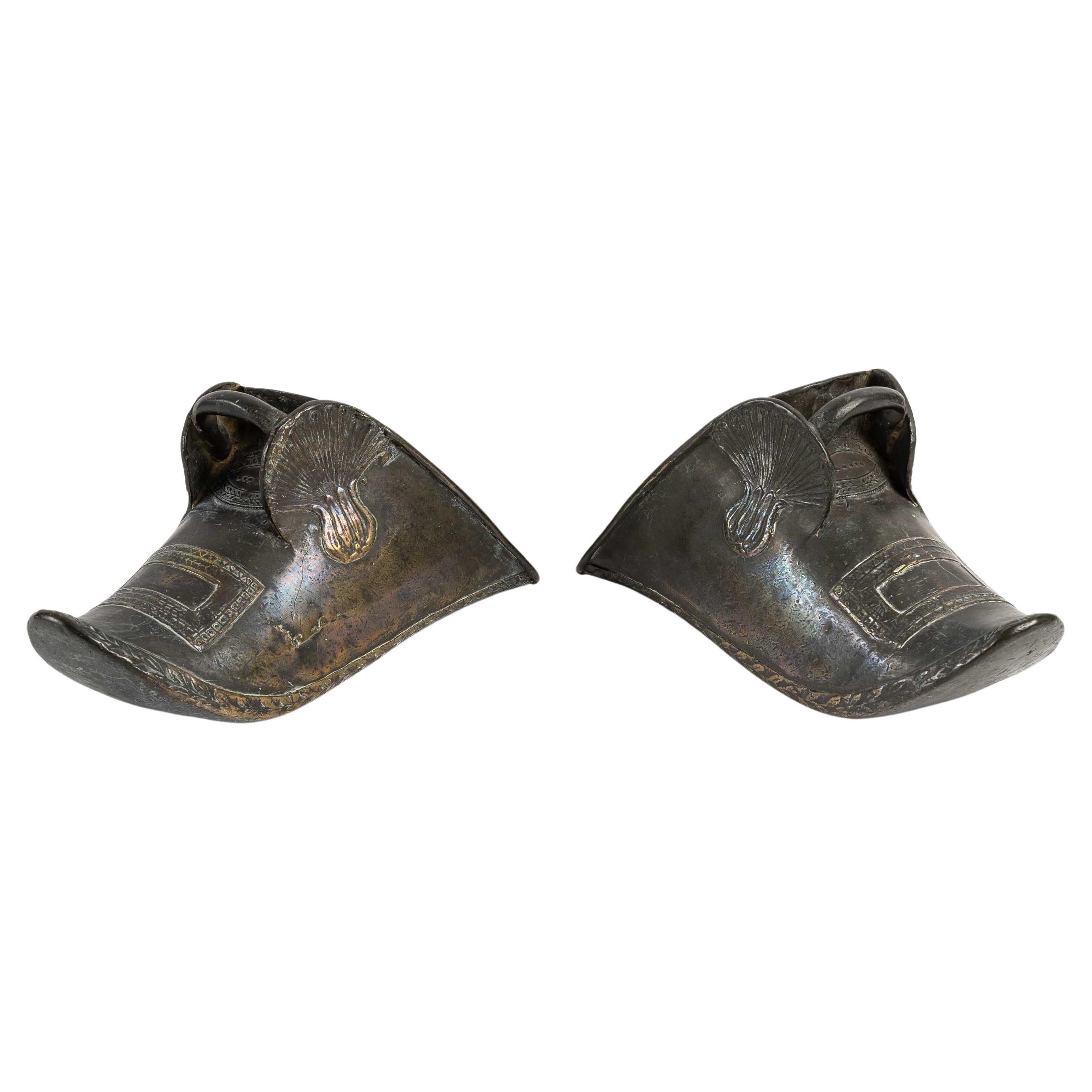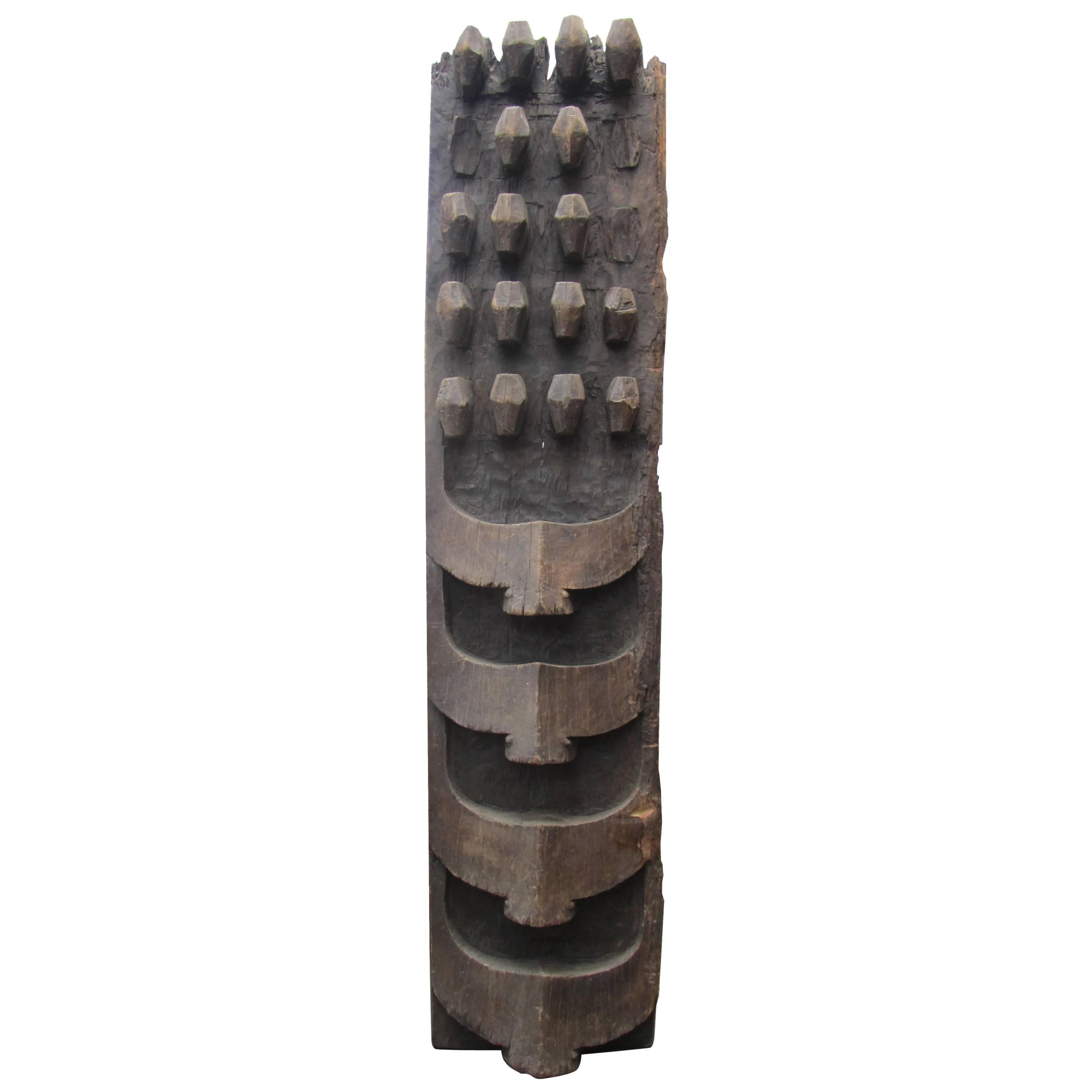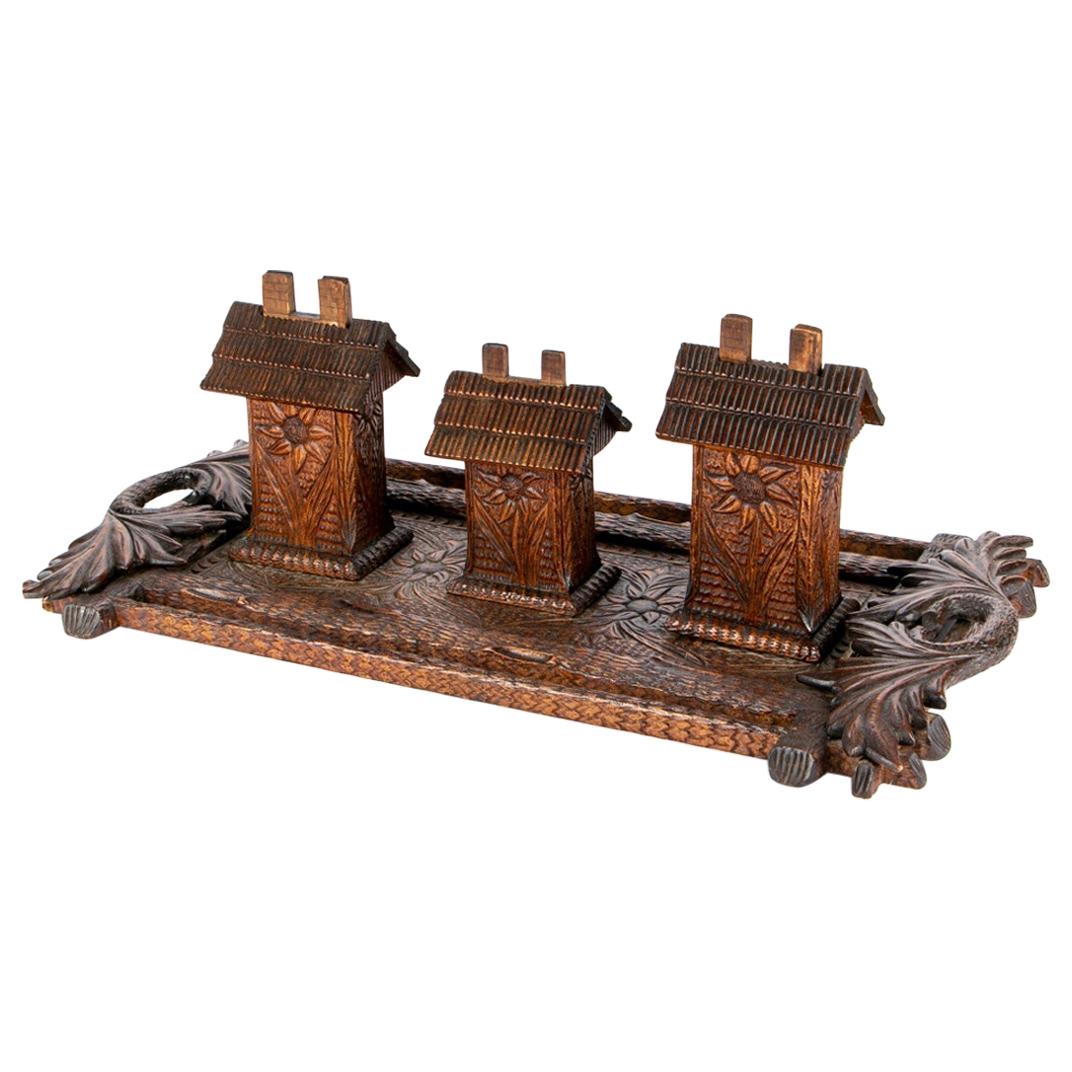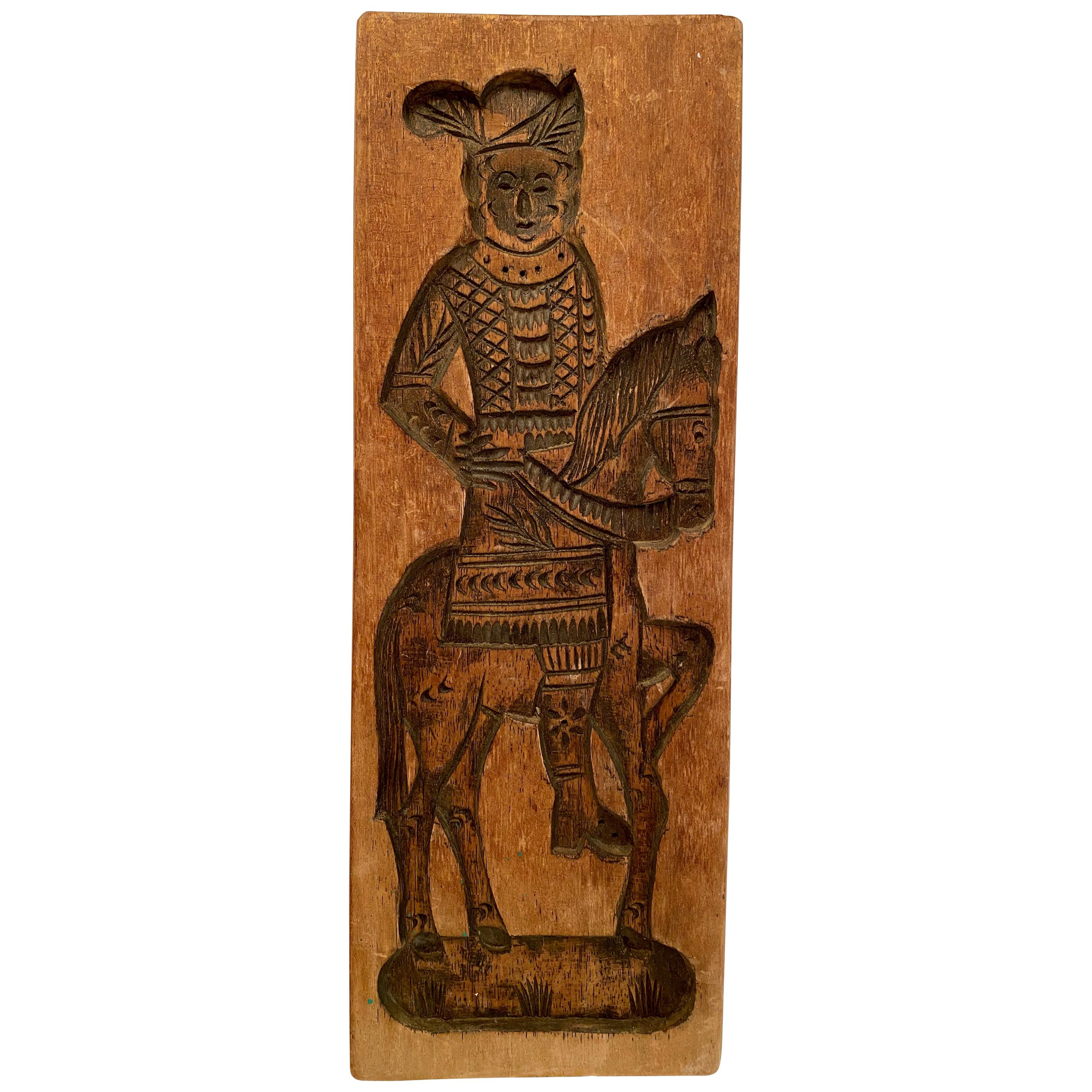Items Similar to "Defiant Comanche" Mixed Media Sculpture by Chris Pardell
Want more images or videos?
Request additional images or videos from the seller
1 of 6
"Defiant Comanche" Mixed Media Sculpture by Chris Pardell
About the Item
Presented is an original mixed-media sculpture by Christopher Pardell, called "Defiant Comanche". The sculpture was produced in a limited edition by Legends, as number 167 of 950. The sculpture features the bust of Defiant Comanche Quanah Parker and was produced in 1991. The sculpture features the artist's signature "C.A. Pradell" in yellow ink on the font of the base, as well as an inscription of the artist's name on the back of the figure's sash.
Quanah Parker was a war leader of the Quahadi band of the Comanche Nation and a prominent figure in the Red River War. Quanah Parker was never elected chief by his people but was appointed by the federal government as principal chief of the entire Comanche Nation. He became a primary emissary of southwest indigenous Americans to the United States legislature.
Christopher Pardell began sculpting at young age. Influenced by the work of renowned sculptors Russell, Remington, and Rodin, Pardell wanted to pursue his passion for realism. His formal education was laid aside in favor of an apprentice mold maker position with a statuary company. As an apprentice to the Italian master artisans who ran the statuary, Christopher rapidly learned the skills that would enable him to excel as an artist and earn the stature that has come with his success. Never sketching his designs on paper, Christopher composes all of his work in three dimensions, in a marquette. This unique approach explains the unparalleled beauty and detail that are the trademarks of his work. Christopher's exceptional style and special talent have served to impress even the most discriminating collector.
The sense of tragedy and drama of the Native American has long been an artistic theme of his. "I try to convey the spirit behind the Native American lifestyle. The sculptural nature of Native American dress, their use of dance as a metaphor for their vision of a world in constant motion, and their intriguing way of life all provide a rich field of composition and drama from which I create," Pardell says. Upon reflecting on what his art means to him, Pardell states, "I try to express myself through sculpture. It's all I've ever done. It's all I know how to do."
CONDITION:
Mixed-media sculpture with bronze, copper, pewter. Colorized. Sculpture body has no nicks, chips, or scratches.
Dimensions: 14" H x 6 1/2" W x 5" D.
- Dimensions:Height: 14 in (35.56 cm)Width: 6.5 in (16.51 cm)Depth: 5 in (12.7 cm)
- Materials and Techniques:
- Period:1990-1999
- Date of Manufacture:1991
- Condition:Wear consistent with age and use. Mixed-media sculpture with bronze, copper, pewter. Colorized. No noticeable damage.
- Seller Location:Colorado Springs, CO
- Reference Number:
About the Seller
4.9
Platinum Seller
These expertly vetted sellers are 1stDibs' most experienced sellers and are rated highest by our customers.
Established in 2010
1stDibs seller since 2011
400 sales on 1stDibs
Typical response time: <1 hour
- ShippingRetrieving quote...Ships From: Colorado Springs, CO
- Return PolicyA return for this item may be initiated within 10 days of delivery.
More From This SellerView All
- Carved Spread Wing EagleLocated in Colorado Springs, COPresented is a spread wing eagle, most likely from the late 19th to early 20th century. This carved pine eagle is poised for takeoff and rendered with fierce facial details and well-carved plumage. The carved eagle shows intricate detail, including individual feathers. The eagle is accented with white and yellow paint to highlight the head and beak. The eagle's wings are spread widely, in a manner similar to Bellamy eagles...Category
Antique Late 19th Century Sculptures and Carvings
MaterialsPine
- Two Hunting Dogs Bronze SculptureLocated in Colorado Springs, COPresented is a bronze sculpture of two hunting dogs. One dog is depicted with his nose to the ground, having caught the scent of the hunt. The other dog p...Category
20th Century Sculptures and Carvings
MaterialsBronze
- Patriotic Eagle Bronze Sculpture After Jules MoigniezBy Jules MoigniezLocated in Colorado Springs, COPresented is a 20th century bronze sculpture, after Jules Moigniez, of an eagle on a rocky perch. The dignified eagle has its wings tucked and his head turned to the side, showcasing exquisite craftsmanship. Textured feathers, a rugged base, and sharp talons show Moigniez’s artistry at the lost wax process. The bronze sculpture sits atop a marble base. Jules Moigniez (1835-1894) was a French sculptor widely known for his highly detailed bronze works depicting dynamic wildlife. After studying under Paul Cromolera, Moigniez made a name for himself at his first exhibition in 1855 at the Paris Exposition Universelle. From 1859 to 1892, he showed regularly at the annual Saloons, with a total of 30 recorded works exhibited. A successful sculptor in France, Moignez increased his British and American collector base by exhibiting at the London International Exhibition of 1862. Intensely dedicated to the process of casting, Jules and his father decided to establish their own foundry in 1857, solely for the purpose of having complete control at every step, as well as the freedom to experiment. They created bronzes with unusually and unique finishes, experimenting in gilded, silver, and multi-color chemical patinas. Most of his works were cast using the lost-wax patina and were always chiseled and chased with great skill and care. While many bronze artists at the time focused solely on the subject, Moigniez incorporated highly detailed bases to accommodate his various animals. After Jules Moigniez’s tragic death in 1894, his father continued to cast his son’s bronzes from the Moigniez foundry. Just before Moigniez’s father also passed away, he sold the foundry and his casts to Auguste Gouge, a family friend who once cast bronzes for Jules' teacher Paul Cromolera. Gouge continued to produce Moigniez’s bronze sculptures until WWI. Eagle sculptures, such as this, gained such popularity in America because of the symbolic and historical meanings associated with the elegant bird. The eagle motif has been widely used throughout American history, most notably as part of our Great Seal. The founders of the United States were fond of comparing their new republic with the Roman Republic, in which eagle imagery was prominent. Since then, the eagle motif has appeared in allegorical engravings...Category
20th Century Sculptures and Carvings
MaterialsBronze
- "Legends of the West-Indian Chief" by Chris Calle, Mixed Media PaintingLocated in Colorado Springs, COPresented is the original mixed media illustration of "Legends of the West - Indian Chief" by Chris Calle. The vibrant illustration features a head and shoulders portrait of a Native American chief. The chief is wearing an elaborate feathered and beaded headdress. Chris Calle painted...Category
1990s Paintings
MaterialsPaint
- Vintage Brass Eagle on Rocks, Circa 1960sLocated in Colorado Springs, COPresented is a vintage brass sculpture of a bald eagle on rocks. Made in America in the early 1960s, this sculpture features a large-scale, rea...Category
Vintage 1960s American Animal Sculptures
MaterialsBrass
- Bellamy Style Hand-Carved New England Pine Eagle, Early to Mid-20th CenturyLocated in Colorado Springs, COThis is an original American eagle, hand-carved from pine during the early to mid 20th century. The eagle features a touch of original gilt over yellow sizing with hand-painted highlights, emphasizing the eyes and beak. The eagle is displayed with both wings fully outstretched. The feathers are expertly detailed, especially considering that this eagle is a single-piece carving. The eagle is both the national bird and the national animal of the United States. The founders of the United States were fond of comparing their new republic with the Roman Republic, in which eagle imagery, usually the golden eagle, was prominent. On June 20, 1782, the Continental Congress adopted the design for the Great Seal of the United States depicting a bald eagle grasping 13 arrows in its sinister (left) talon and an olive branch with its dexter (right) talons. Those arrows are tightly aligned, a symbol of "strength in unity" that's found in the traditional cultures everywhere, from the Romans to the Iroquois. In this case, the bundle of arrows were a nod to the unity of the original 13 colonies. The olive branches emphasize the power of peace. The eagle motif has since appeared in allegorical engravings...Category
Early 20th Century American Sculptures and Carvings
MaterialsPine
You May Also Like
- Pair of Bronze Stirrups 'Estribos'Located in Saint-Ouen, FRPair of Bronze stirrups (Estribos), 19th century. Measures: H: 14 cm, W: 29 cm, D: 11 cm.Category
Antique 19th Century European Sculptures and Carvings
MaterialsBronze
- Naga TOTEM, North-East India, 19th CenturyLocated in Mexico City, MXComing from the area of influence of the Naga people, this stunning monolitic piece is an extraordinary example of their cultural views. The Nagas are a conglomeration of different t...Category
Antique 19th Century Southeast Asian Tribal Sculptures and Carvings
MaterialsWood
- Rare Tramp Art Carved Wood Cigarette DispenserLocated in Bridgeport, CTAn elaborately carved and stained wood tray densely textured and decorated with sun flowers. Large carved leafy handles on the ends. The tray is set with three house form cigarette dispensers...Category
Vintage 1930s Folk Art Sculptures and Carvings
MaterialsWood
- 19th Century Nobleman Wooden Gingerbread Cookie Speculaas Springerle MoldLocated in Nuernberg, DEClassic 19th century wooden gingerbread cookie or speculaas springerle Mold, circa 1860-1880 (Nobleman). Made of hand carved wood. Found at an estate ...Category
Antique 19th Century Austrian Sculptures and Carvings
MaterialsWood
- 19th Century Noble Horseman Wooden Gingerbread Cookie Speculaas Springerle MoldLocated in Nuernberg, DEClassic 19th century wooden gingerbread gingerbread cookie or speculaas springerle mold, circa 1860-1880 (Noble Horseman). Made of hand carved wood. F...Category
Antique 19th Century Austrian Sculptures and Carvings
MaterialsWood
- Cow Bull Folk Art Speculaas Springerle Cookie or Butter Mold Antique, GermanLocated in Nuernberg, DEClassic late 19th century wooden gingerbread cookie or speculaas springerle mold, circa 1890 (cow bull ox). Made of hand carved wood. Found at an esta...Category
Antique Late 19th Century Austrian Folk Art Sculptures and Carvings
MaterialsWood
Recently Viewed
View AllMore Ways To Browse
American Pewter
Figure Carving Gold
Bronze Bust American
Formal Dresses Vintage Style
Formal Vintage Style Dresses
Vintage Style Formal Vintage Dresses
Vintage Style Formal Dress
Vintage Style Formal Dresses
Copper River
Copper Molds Uses
Parker Vintage Furniture
Long Vintage Formal Dress
Parker Gold
Nick Bronze
Southwest Style Furniture
Bronze Federal
Copper Molds Vintage
Vintage Copper Molds





